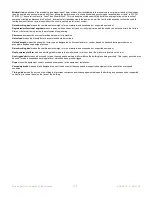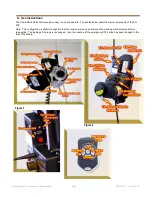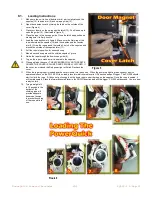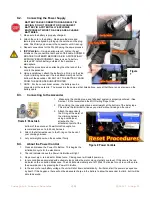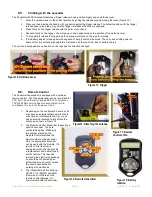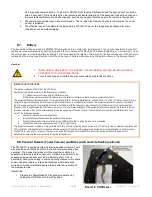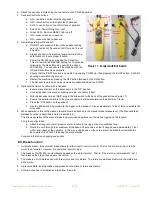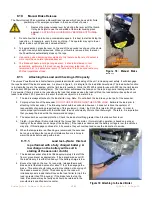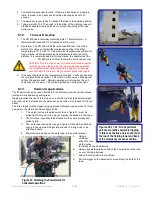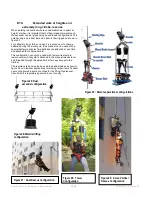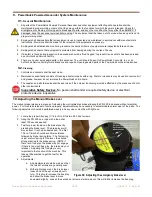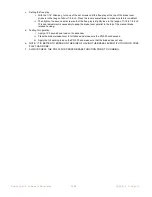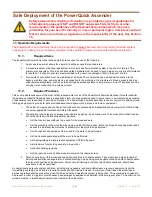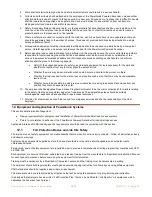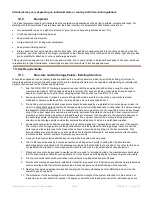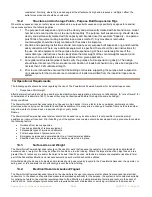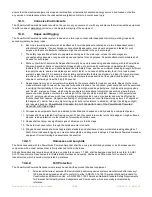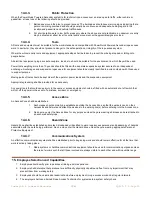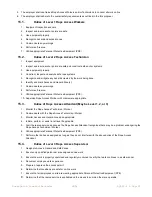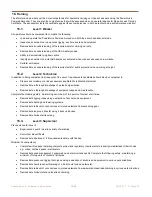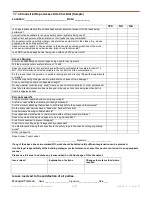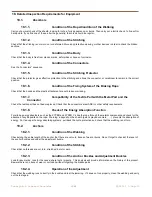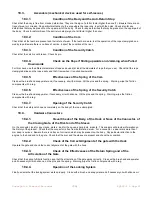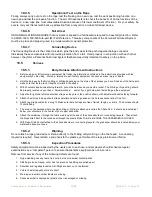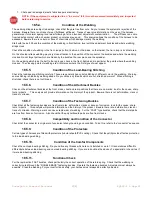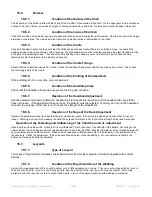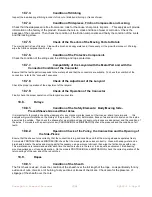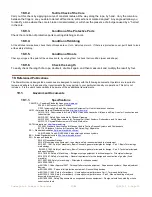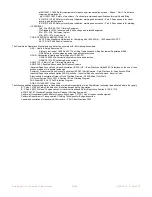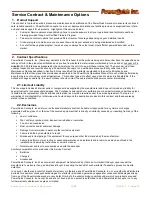
PowerQuick Powered Ascender
(21)
PQ500-1 1-Sep-15
Standards may vary depending on individual state or country Fall Protection regulations.
12.2.
Equipment
The typical equipment used by all climbers has the overwhelming advantages of being light, portable, versatile and tough. For
climbing with the PowerQuick Powered Ascender the basic inventory of equipment for each climber consists of:
Two kernmantle ropes, one static (no stretch or “give”) and one dynamic (stretches about 10%).
A full body lightweight climbing harness
An approved fall arrest system
A large assortment of locking steel carabineers
An approved climbing helmet
A large assortment of nylon webbing and anchor straps. This webbing is used extensively for anchors, positioning and fall
protection, and is the feature that strongly contributes to the effectiveness of the techniques as it is strong, light and provides
good versatility for attaching to various anchorage elements.
This equipment is assigned to a climber to use and maintain, and is easily carried in a standard backpack. While each individual
is responsible for gear maintenance, master logs are kept of critical items to track usage and wear.
13.
Use Requirements
13.1.
Structure and Anchorage Points - Existing Structure
Where the suspension ropes or safety ropes are attached to an existing structure which is part of the building, structure or a
temporarily erected structure, the anchorage points and the building structure must be capable of withstanding an ultimate load
equal to that required for the climber and equipment.
1. Fed. Std. RR-S-001301 Climbing Equipment requires that the equipment shall be strong enough to support a
minimum static load of 1000 pounds and a safety factor of 3 for dynamic loading. It should be strong enough to
absorb an impact load of a solid object weighing at least 500 pounds in a free fall to 12 inches.
2. Any equipment chosen to support a person at height should be such that it cannot be accidentally removed,
dislodged or become unfastened from the rope while a person is suspended from it.
3. The building or structure and anchorage points should be assessed by a registered structural engineer, unless it is
clear to a
competent person
that the anchorage system is structurally adequate. In either case, the person making
the assessment shall document this. An example of where an engineer may not be required is where an anchorage
sling of the correct capacity is secured around a solid, permanent structure such as a plant room, major structural
members, suitable bracing members in bridges/towers etc. However, if any doubt as to the structural adequacy of
the anchorage exists, an engineer should be involved. The engineer shall certify in writing that the proposed
structure and anchorage points could safely contain all combinations of loads in a worst-case situation.
4. All relevant documentation shall be provided to the building manager or representative and the user of the system.
The location of anchorage points, method of attachment, and the system of anchorage slings, which connect the
work rope and the safety rope to their respective anchors, should be clearly shown in the documentation. This
documentation may also include such documents as Work Method Statements, risk assessments, site checklists,
insurance details, contact numbers for emergency services etc.
5. A copy of the documentation shall be kept on site while the system is being used.
6. Prior to first use and annually, a competent person shall inspect and certify in writing that the structure and
anchorage points correspond with the drawings provided and that the effects of corrosion or any other factors have
not rendered the structure or anchorage points unsafe for use with the industrial rope access equipment.
7. Where anchors are to be exposed to weather and/or are used for extended periods, the manufacturer should state
that the anchors are suitable for such applications. Holes should be suitably sealed to prevent ingress of moisture.
8. Friction or chemical anchors should not be used without being inspected and proof loaded.
9. Permanent anchorages specifically installed for industrial rope access (or fall arrest) work shall be clearly labeled as
such and marked with their ultimate (failure) load. Annual inspection and proof loading will be required.
10. Needles, brackets and parapet hooks shall comply with the same standards as for scaffolding, and must not be
subject to any shock loads.
11. The attachment to the anchorage should at least equal the strength of the system attached to it. Re-direction of
ropes from an anchor should not exceed 120 degrees unless the side loads produced at the redirection point are
Summary of Contents for PQ 500-1
Page 46: ......
Page 48: ...NOTES...

